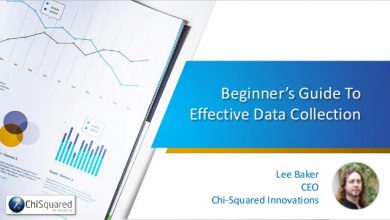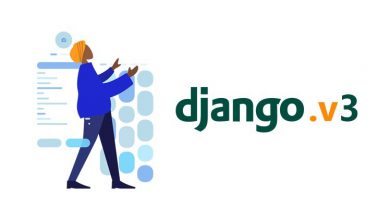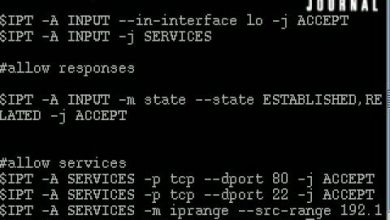Natural Language Processing with Deep Learning in Python

Natural Language Processing with Deep Learning in Python Free Tutorial Download
- Understand and implement word2vec
- Understand the CBOW method in word2vec
- Understand the skip-gram method in word2vec
- Understand the negative sampling optimization in word2vec
- Understand and implement GloVe using gradient descent and alternating least squares
- Use recurrent neural networks for parts-of-speech tagging
- Use recurrent neural networks for named entity recognition
- Understand and implement recursive neural networks for sentiment analysis
- Understand and implement recursive neural tensor networks for sentiment analysis
- Use Gensim to obtain pretrained word vectors and compute similarities and analogies
- Install Numpy, Matplotlib, Sci-Kit Learn, and Theano or TensorFlow (should be extremely easy by now)
- Understand backpropagation and gradient descent, be able to derive and code the equations on your own
- Code a recurrent neural network from basic primitives in Theano (or Tensorflow), especially the scan function
- Code a feedforward neural network in Theano (or Tensorflow)
- Helpful to have experience with tree algorithms
In this course we are going to look at NLP (natural language processing) with deep learning.
Previously, you learned about some of the basics, like how many NLP problems are just regular machine learning and data science problems in disguise, and simple, practical methods like bag-of-words and term-document matrices.
These allowed us to do some pretty cool things, like detect spam emails, write poetry, spin articles, and group together similar words.
In this course I’m going to show you how to do even more awesome things. We’ll learn not just 1, but 4 new architectures in this course.
First up is word2vec.
In this course, I’m going to show you exactly how word2vec works, from theory to implementation, and you’ll see that it’s merely the application of skills you already know.
Word2vec is interesting because it magically maps words to a vector space where you can find analogies, like:
- king – man = queen – woman
- France – Paris = England – London
- December – Novemeber = July – June
For those beginners who find algorithms tough and just want to use a library, we will demonstrate the use of the Gensim library to obtain pre-trained word vectors, compute similarities and analogies, and apply those word vectors to build text classifiers.
We are also going to look at the GloVe method, which also finds word vectors, but uses a technique called matrix factorization, which is a popular algorithm for recommender systems.
Amazingly, the word vectors produced by GLoVe are just as good as the ones produced by word2vec, and it’s way easier to train.
We will also look at some classical NLP problems, like parts-of-speech tagging and named entity recognition, and use recurrent neural networks to solve them. You’ll see that just about any problem can be solved using neural networks, but you’ll also learn the dangers of having too much complexity.
Lastly, you’ll learn about recursive neural networks, which finally help us solve the problem of negation in sentiment analysis. Recursive neural networks exploit the fact that sentences have a tree structure, and we can finally get away from naively using bag-of-words.
All of the materials required for this course can be downloaded and installed for FREE. We will do most of our work in Numpy, Matplotlib, and Theano. I am always available to answer your questions and help you along your data science journey.
This course focuses on “how to build and understand“, not just “how to use”. Anyone can learn to use an API in 15 minutes after reading some documentation. It’s not about “remembering facts”, it’s about “seeing for yourself” via experimentation. It will teach you how to visualize what’s happening in the model internally. If you want more than just a superficial look at machine learning models, this course is for you.
See you in class!
TIPS (for getting through the course):
- Watch it at 2x.
- Take handwritten notes. This will drastically increase your ability to retain the information.
- Write down the equations. If you don’t, I guarantee it will just look like gibberish.
- Ask lots of questions on the discussion board. The more the better!
- Realize that most exercises will take you days or weeks to complete.
- Write code yourself, don’t just sit there and look at my code.
Suggested Prerequisites:
- calculus (taking derivatives)
- matrix addition, multiplication
- probability (conditional and joint distributions)
- Python coding: if/else, loops, lists, dicts, sets
- Numpy coding: matrix and vector operations, loading a CSV file
- neural networks and backpropagation, be able to derive and code gradient descent algorithms on your own
- Can write a feedforward neural network in Theano or TensorFlow
- Can write a recurrent neural network / LSTM / GRU in Theano or TensorFlow from basic primitives, especially the scan function
- Helpful to have experience with tree algorithms
WHAT ORDER SHOULD I TAKE YOUR COURSES IN?:
- Check out the lecture “What order should I take your courses in?” (available in the Appendix of any of my courses, including the free Numpy course)
- Students and professionals who want to create word vector representations for various NLP tasks
- Students and professionals who are interested in state-of-the-art neural network architectures like recursive neural networks
- SHOULD NOT: Anyone who is not comfortable with the prerequisites.
Download Natural Language Processing with Deep Learning in Python Free
https://mshare.xyz/file/q305Dr1I
https://jia666-my.sharepoint.com/:u:/g/personal/hoquangdai_xkx_me/EfebqG5y5ktJrnPDSdmRaN4BPYBxSNVfvvwk15zWd71nbg
https://anonfile.com/79sdJbn8o6
https://drive.google.com/a/my.riohondo.edu/file/d/1e8r2PRlQRIJO82Q4i-8qgjFG6MkCdlmZ/view?usp=sharing
https://uptobox.com/civppknygrmj




